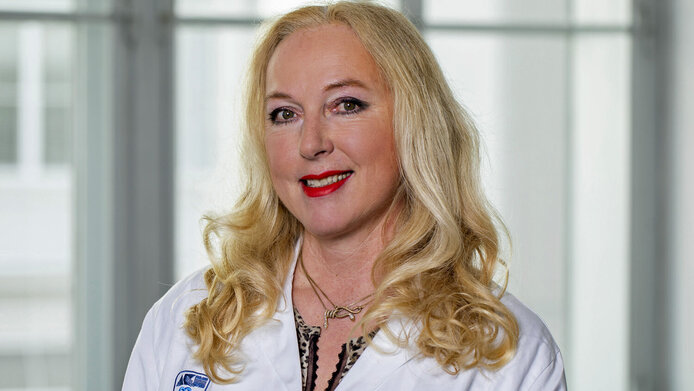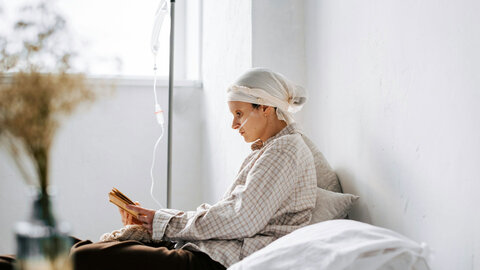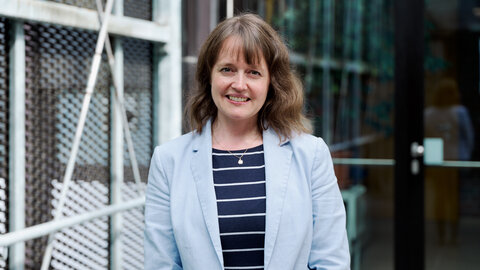The big little difference

A physician’s job often resembles that of a detective: a wide host of factors must be considered to diagnose a disease and study its development, progression, cure and prevention. This is why medicine is so fascinating and difficult at the same time. One factor, however, has been disregarded or outright ignored for many years: gender. Throughout the history of medical research, the prototypical human was male. “This only reflects the general world view, which revolved around men while women and what set them apart went unseen,” physician Alexandra Kautzky-Willer says. “In the past, women were considered unfit study participants due to their menstrual cycles and because they might be pregnant.” As hormonal changes impact pharmacological test results, drugs were not tested on women for a long time, and they remain under-represented in clinical trials to this day. “As a result, medicine still knows way too little about women’s bodies,” Kautzky-Willer concludes.
Biological differences
So what are the differences between the sexes? “For one thing, there are biological and genetic differences; then there are hormones, the distribution of their receptors and their effects, and finally, there’s organ structure,” the researcher explains. Some cardiovascular drugs or anti-coagulants have different effects on female patients because women’s bodies are not only built differently, but there are also variations in enzyme activity, as a result of which substances are broken down more rapidly or more slowly. As women have a higher percentage of fat mass and a lower percentage of muscle mass and water than men, substances are distributed differently in their bodies. Women weigh less than men, have an overall higher body fat percentage and their organs are supplied with more blood.
So there is ample evidence that a person’s sex warrants some attention in medicine. Diabetes or cardiovascular diseases are just two examples that highlight the fact that men’s and women’s bodies are not so similar after all. “Heart attacks not only present differently in women, they also occur ten years later compared to men because estrogen protects premenopausal women. If a woman suffers a heart attack, however, mortality is much higher. And for women who have been diagnosed with a metabolic disorder, the risk is considerably increased already from a young age,” Kautzky-Willer shares. Specialized in the field of diabetes, she has witnessed enormous discrepancies between women and men in this field for many years. It is thanks to her work on gestational diabetes that a glucose tolerance test has been included in the medical examinations carried out as part of the Austrian mother-child health passport scheme since 2010.
Personal details
Alexandra Kautzky-Willer became a trailblazer through her appointment as Professor for Gender Medicine in Austria when the first respective chair was established at the Medical University of Vienna in 2010. She investigates the biological and psycho-social differences between men and women when it comes to health awareness as well as in the development and perception of diseases.
More Information
What society makes of sex: gender
While sex is a biological attribute that people are born with, gender encompasses social and psychological factors. This particularly relates to lifestyle: diet and movement habits, integration in social surroundings, gender roles and stereotypes prevalent in society. “All of these things influence the way a person acts, and thus also what they do to maintain their health, how they perceive diseases, and their compliance with treatment,” the head of the Division of Endocrinology and Metabolism at the University Hospital Vienna says. “In past studies, information on parameters associated with gender was rarely collected, which is why we lack data for analysis,” she says.
Pioneering work
In 2010, the Medical University of Vienna established the first Chair for Gender Medicine, considered by many a thoroughly interdisciplinary field, and the endocrinology and metabolism expert was appointed Professor of Gender Medicine. At the time, there was little awareness of the field’s complexity. It is due to her pioneering work that this is no longer the case today. More and more medical societies are organizing conventions on gender medicine, and renowned major magazines such as Nature and The Lancet have encouraged contributing authors to consider gender in all future publications in addition to publishing special editions on women’s health.
Big data analyses
Nowadays, the Gender Medicine Unit headed by Alexandra Kautzky-Willer is part of a strong national and international network of experts with an impressive number of collaborations and publications. In Austria, the unit cooperates closely with Stefan Thurner and Peter Klimek of the Medical University of Vienna’s Section for Science of Complex Systems to carry out big data analyses on large data sets regarding diseases such as COVID and diabetes.
Gender and health
In 2019, Alexandra Kautzky-Willer and her colleague Teresa Gisinger joined forces with experts from Canada, Italy, Sweden and Spain and founded the “Gender Outcomes & Well-being Development “group, in short: GOING-FWD. The group’s goal is to investigate the impact of psycho-social and socio-cultural factors on health. “This is anything but trivial as these factors are themselves hard to investigate. Data on parameters associated with gender, such as gender stereotypes and relationships, are rarely collected in clinical studies so that we don’t have nearly enough information on these things,” she explains. In a project funded by the Austrian Science Fund (FWF), the international team is working on a novel analysis tool in this field.
New gender analysis tool
The team of researchers has been exploring data sets based on health surveys in the various countries with a total of more than 30 million respondents, looking for conspicuous gender-specific patterns that cannot be explained by sex. Through this approach, the researchers strive to shed light on gender differences related to a selection of chronic diseases: “To this end, we start out by identifying the gender-specific factors in a given data set, such as: What’s the employment status of this person? How many people live in their household? Who earns the largest share of the household income? Who is responsible for household chores?” Based on these elements, a gender model has been developed, for which factors were attributed to genders regarded as typically female or male solely based on the available data.
The disadvantage of identifying as female
This exploration revealed that people associated with the female gender – which can be both women and men in biological terms – are more likely to suffer from cardiovascular diseases. They are also at a disadvantage when it comes to access to health care services. The results leave no doubt about how strongly socio-cultural gender aspects impact an individual’s health status. Even though women’s increased estrogen levels and other biological perks reduce their risk regarding cardiovascular diseases, socio-cultural aspects erase these advantages when it comes to the actual onset of these disorders.
Health care deteriorates as gender inequality rises
The research also revealed a clear link to gender when it comes to diabetes: patients identifying as female are less likely to get an HbA1c test, which shows whether the medication administered to manage diabetes is doing its job. In a direct comparison, Austria fared more poorly than Canada even though the two countries are similar regarding their social structures and ranking in the United Nation’s Gender Inequality Index. Across Europe, access to health care for people who identify as female gets worse as a function of the country’s ranking in the Gender Inequality Index.
Reducing gender differences
These results point to the urgent need to further sensitize medical researchers and practitioners for gender aspects. What’s more, they are a clear indication of where societies have some catching-up to do. “Where a group of people is treated differently and disadvantaged in their access to health care, we can and must change gender stereotypes,” the Gender Medicine Unit’s head emphasizes. What’s needed are measures that reduce gender gaps and shake up outdated views regarding gender roles.
The future is personalized medicine
For Alexandra Kautzky-Willer, the future of medicine has even more in store: she envisions personalized medicine that treats every patient in the way most suitable for them. This will be accomplished by considering factors such as sex, age, body weight and composition. “Science is constantly making headway. Thanks to genome sequencing, we know a tremendous amount about some diseases, but we are still struggling to put this knowledge into practice. We simply cannot let research take off this way without medical practice keeping up. It will be our most important objective to focus on that,” she says about the future of medicine.
Considering gender in the development of AI
Alexandra Kautzky-Willer also regards the increased use of AI as a further challenge in the field of medicine: “Artificial intelligence is also changing the way medicine is practiced. And both sex and gender must be considered in the development of technological applications if we want to avoid ending up with a plethora of hidden gender gaps. AI is just as good as the data it has been trained on.”
In touch with patients
When asked what Alexandra Kautzky-Willer considers important for her work, she mentions a strong connection between basic and clinical research. This, she points out, makes associations easier to find. She is not fond of strictly separating science and clinical practice, the way it is done in the United States, but fears that this is a direction into which also Europe is headed. Despite the stress that comes with working at the hospital, which constantly requires physicians to handle several tasks at once, the physician-scientist says she truly appreciates the link between research, teaching and patient care. “I do clinical research, and I need to be in touch with patients. These things simply complement each other.”
A childhood dream of becoming a doctor
Alexandra Kautzky-Willer had a front row seat to medicine already as a child. The daughter of a former director of a school for children with hearing impairments, she knew early on that she wanted to be a physician and researcher when she was grown up. “As a child, you naturally romanticize the profession, thinking it’s nothing but healing people and finding solutions. You only find out that it’s also hard work once you start working as a physician,” she reminisces about her beginnings. The little spare time she has she spends climbing mountains, mountain-biking, and surfing. Maybe it does not come as a surprise that the native Viennese honed her surfing skills at nearby Neusiedler Lake in the province of Burgenland.






